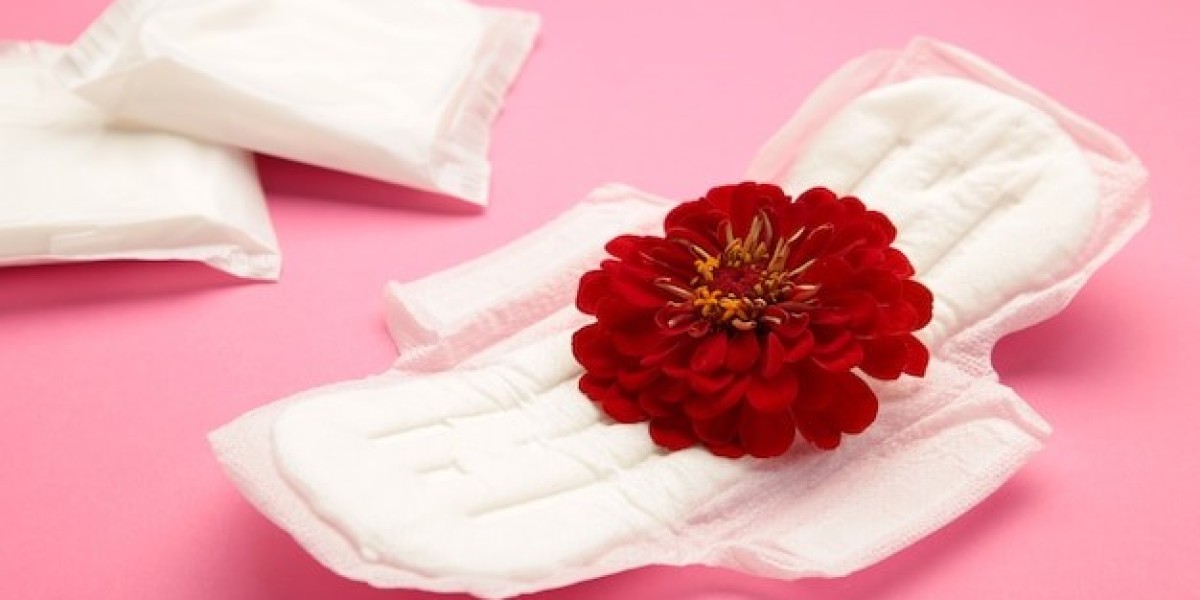Traditional sanitary pads, primarily made of plastics and synthetic materials, present significant environmental and health challenges. Their non-biodegradable nature leads to long-lasting landfill waste and contributes to plastic pollution. These products often contain harmful chemicals that can irritate sensitive skin and pose health risks. In contrast, biodegradable sanitary pads offer a sustainable solution by breaking down more quickly and using natural materials. This shift towards eco-friendly menstrual products addresses environmental and health issues, promoting a more responsible and sustainable approach to menstrual care.
What Is the Problem With Traditional Sanitary Pads?
Environmental impact:
Traditional sanitary pads are made primarily from plastic and synthetic materials, which pose significant environmental challenges. These products contribute to landfill waste as they are non-biodegradable and can take hundreds of years to decompose. As a result, they accumulate in landfills and oceans, adding to the global plastic pollution crisis. The production and disposal of conventional pads also contribute to greenhouse gas emissions and environmental degradation.
Health concerns:
Beyond environmental issues, traditional sanitary pads raise health concerns. Many conventional pads contain synthetic materials, dyes, and fragrances that irritate sensitive skin and lead to allergic reactions. Additionally, some pads are treated with chlorine bleach, which can produce harmful byproducts, including dioxins. Dioxins are known to be toxic and have been linked to various health issues, including reproductive and developmental problems.
What Are Biodegradable Sanitary Pads?
Biodegradable sanitary pads are designed to break down more quickly and naturally than their traditional counterparts. They are made from materials that decompose more efficiently, reducing their environmental footprint. Unlike conventional pads, which can persist in landfills for centuries, biodegradable pads are intended to decompose within months to a few years, depending on the material and environmental conditions.
Benefits of Biodegradable Sanitary Pads
Environmental benefits:
The primary advantage of biodegradable sanitary pads is their reduced environmental impact. These pads decompose faster than conventional options, decreasing landfill waste and minimizing plastic pollution. Renewable materials, such as organic cotton and bamboo, help conserve resources and reduce the overall ecological footprint of the menstrual cycle.
Health benefits:
Biodegradable pads often contain fewer harmful chemicals than traditional pads. The absence of synthetic materials, dyes, and fragrances can reduce the risk of skin irritation and allergic reactions. Biodegradable xl pads offer a safer alternative for individuals with sensitive skin or those concerned about chemical exposure.
Economic benefits:
While biodegradable pads may initially be more expensive than conventional options, they can be cost-effective in the long run. The growing market for eco-friendly products drives innovation and competition, which may lead to reduced prices over time. Additionally, using biodegradable xl pads aligns with a sustainable lifestyle, potentially reducing the need for costly waste management solutions in the future.
How Biodegradable Sanitary Pads Are Made
Materials used:
The production of biodegradable sanitary pads begins with selecting sustainable materials. Organic cotton is cultivated without harmful chemicals, while bamboo fiber is processed into a soft, absorbent form. Cornstarch and other plant-based materials are used to create the absorbent core, which is designed to break down faster than synthetic alternatives.
Manufacturing process:
The manufacturing process for biodegradable xl pads involves several key steps:
Material Sourcing: Raw materials such as organic cotton, bamboo fiber, and cornstarch are sourced from sustainable suppliers.
Processing: The materials are cleaned, processed, and treated to ensure they meet quality standards. Organic cotton and bamboo are often spun into fibers and woven into a fabric.
Assembly: The processed materials are assembled into the final pad product. This includes creating the absorbent core, adding a biodegradable packing, and ensuring secure attachments.
Quality Control: The finished pads undergo quality control tests to meet performance and safety standards before being packaged for distribution.
The Future of Biodegradable Sanitary Pads
The future of biodegradable sanitary pads looks promising, with ongoing advancements in technology and materials. Innovations in biodegradable materials and manufacturing processes are expected to improve the performance and affordability of these products. As consumer awareness and demand for sustainable options increase, the market for biodegradable xl pads is likely to expand, making them more accessible and cost-effective.
How to Choose the Right Biodegradable Sanitary Pad
When selecting a biodegradable sanitary pad, consider factors like absorbency levels, ensuring the pad meets your needs for light, heavy, or overnight flow. Comfort and fit are essential, so choose xl pads made from gentle materials that fit well. Research brands are known for sustainability and quality, as well as checking certifications and customer reviews.
Weigh price against value, considering the long-term benefits of eco-friendly products. To make the switch, start slowly by incorporating biodegradable pads into your routine, educate yourself on the options, and experiment with different brands to find the best fit for your needs.
The Role of Education and Awareness
Importance of spreading knowledge:
Raising awareness about biodegradable sanitary pads' environmental and health benefits is crucial for encouraging widespread adoption. Education can help consumers make informed choices and understand the impact of their purchasing decisions. Advocating for sustainable products can drive market demand and support the development of innovative solutions.
How to advocate for biodegradable products:
Share information about the benefits of biodegradable sanitary pads through social media, blogs, and community events. Support sustainable brands by purchasing and promoting those that prioritize eco-friendly practices. Discuss environmental issues and sustainable menstrual hygiene products to raise awareness and influence others to make more eco-conscious choices.
Conclusion
Biodegradable sanitary pads represent a crucial step towards more sustainable menstrual care. Addressing traditional xl pads environmental and health concerns, these eco-friendly alternatives offer a viable solution to reduce plastic waste and minimize exposure to harmful chemicals. As technology and consumer awareness advance, the market for biodegradable options is set to grow, making them more accessible and affordable. Embracing these products supports personal health and contributes to broader environmental sustainability, encouraging a shift towards more responsible and informed consumer choices.








